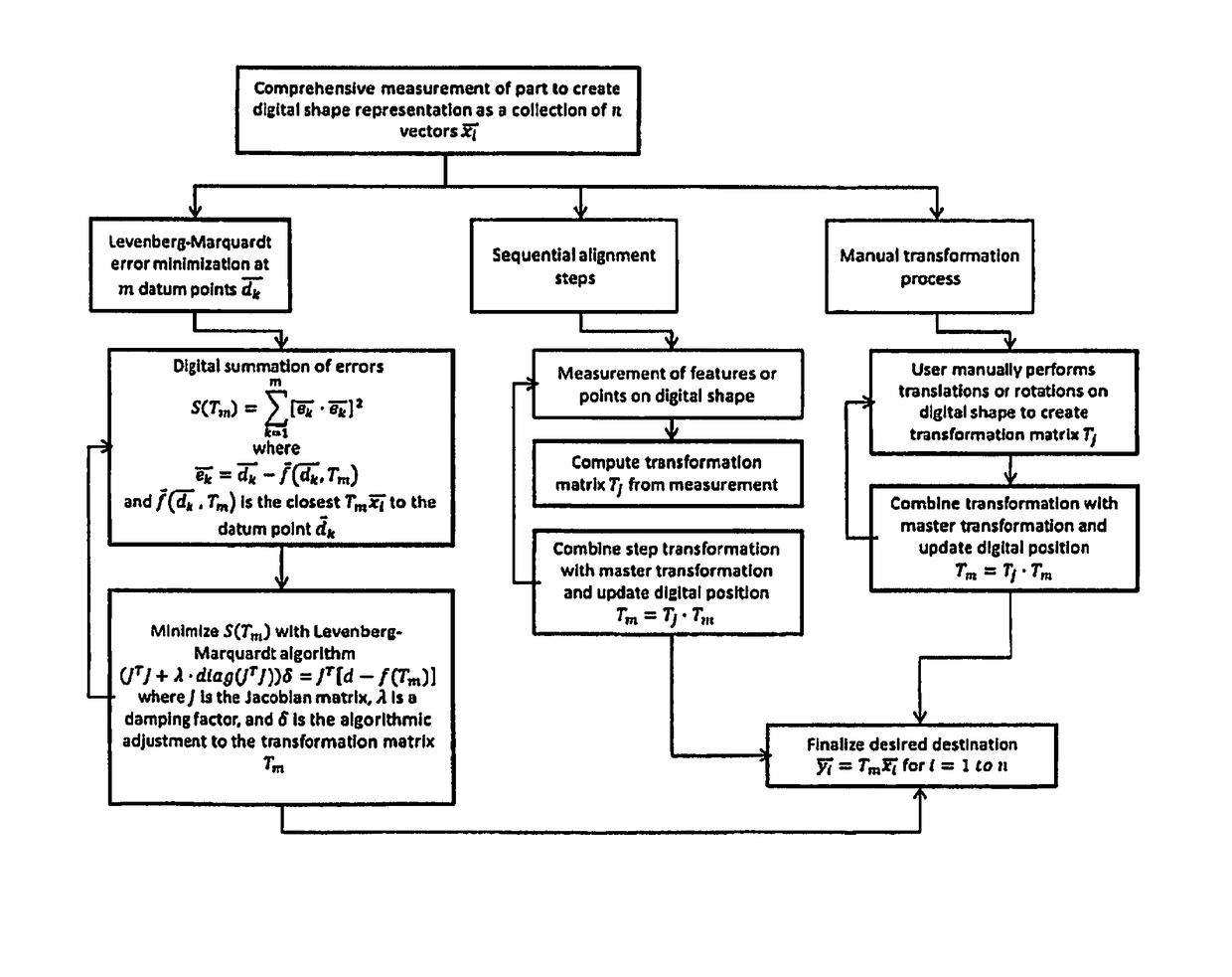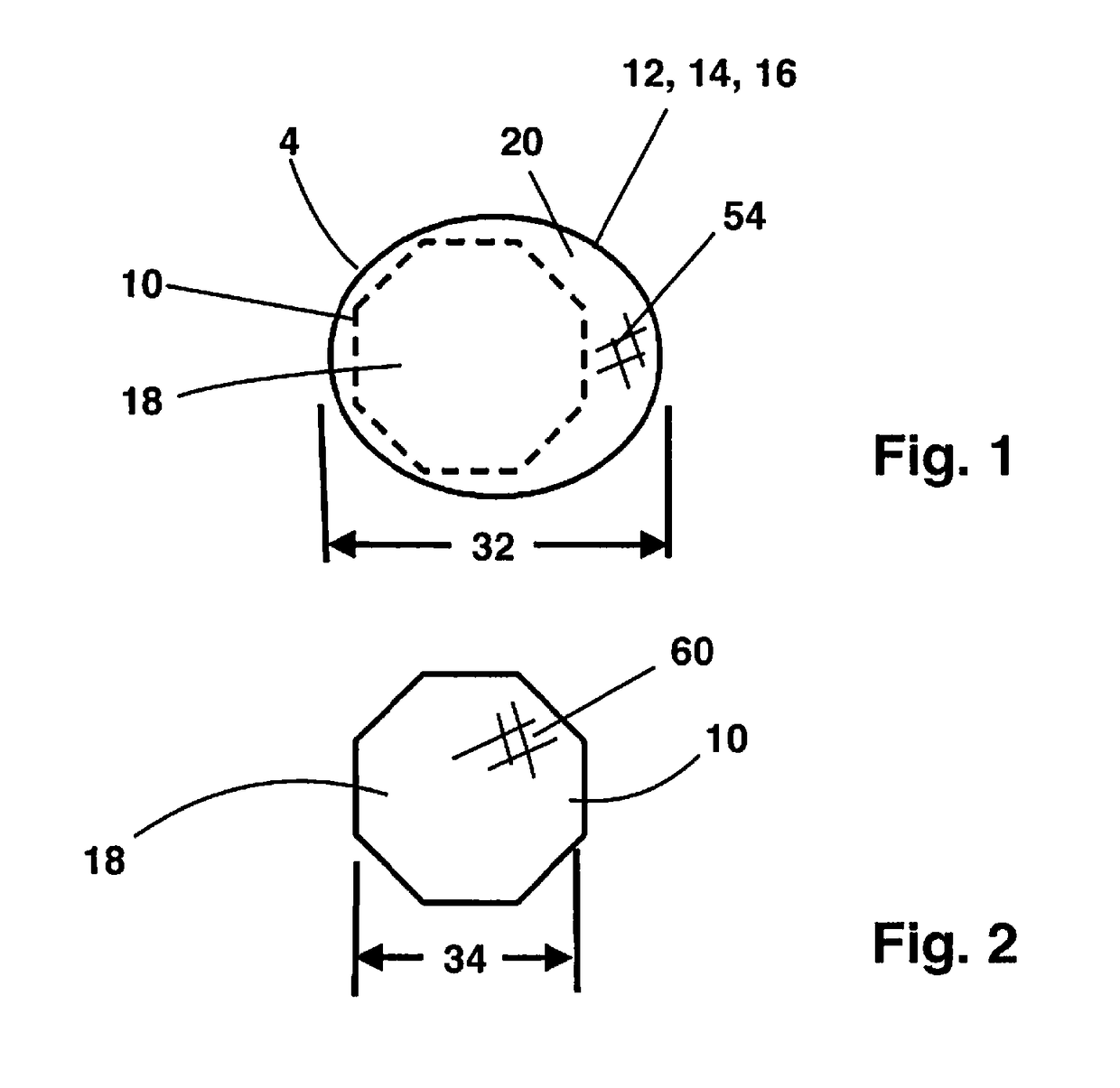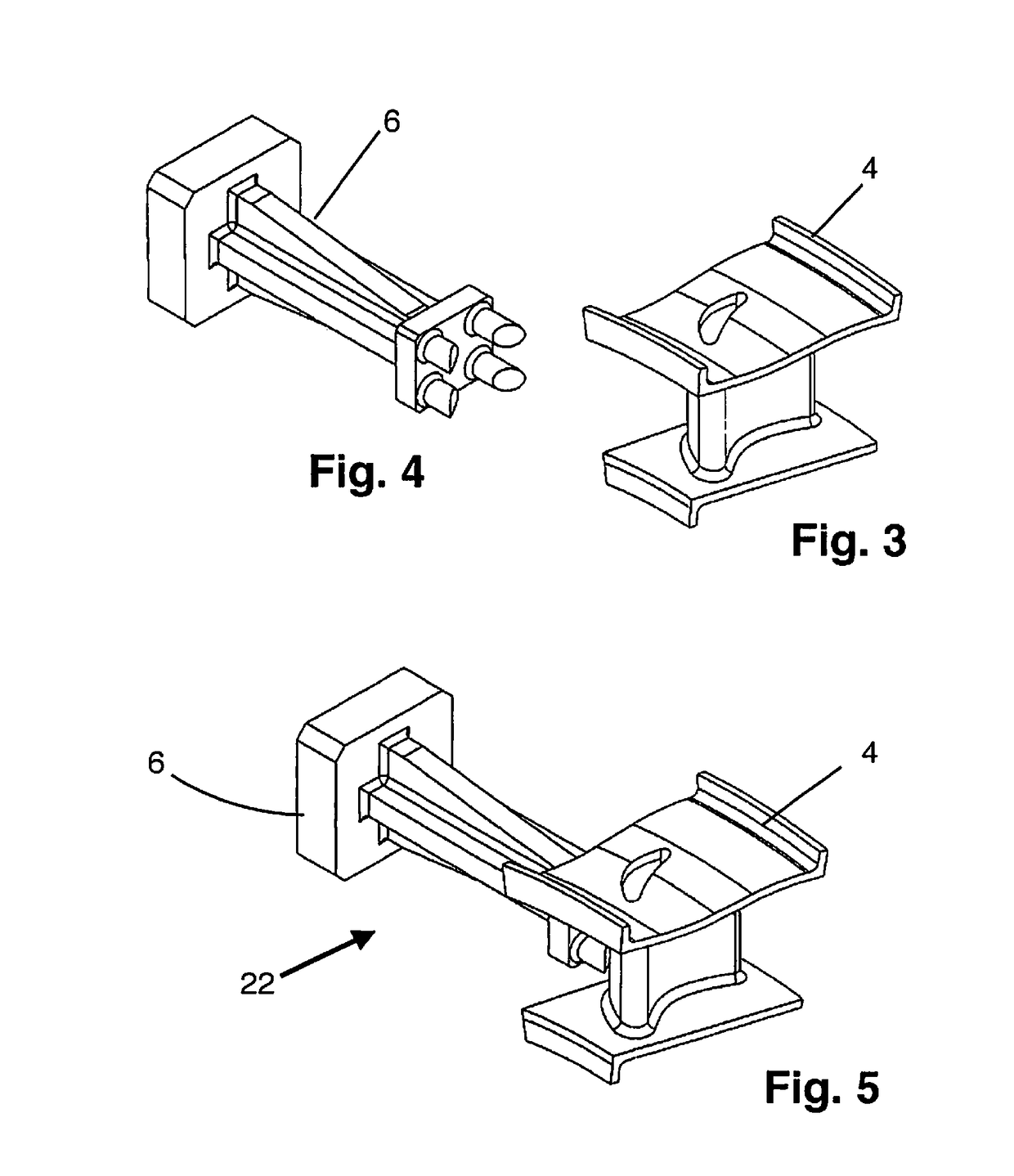System and method for adaptive positioning of a work piece
a work piece and work piece technology, applied in the field of positioning and securing work pieces, can solve the problems of multiple production of precision manufactured parts, delay and opportunity for errors, multiplied time required and opportunities for errors, etc., to improve process output quality, save setup time, and reduce the probability of errors
- Summary
- Abstract
- Description
- Claims
- Application Information
AI Technical Summary
Benefits of technology
Problems solved by technology
Method used
Image
Examples
Embodiment Construction
[0049]The invention is an adaptive positioning system 2 for positioning a work piece 4 to a non-adaptive fixture 6 for use on a CNC machine 8 to turn the work piece 4 into a machined object 10. As shown by FIGS. 1 and 2, a CNC machine 8 changes the shape of a work piece 4 to produce the machined object 10. While the system 2 of the invention is most useful for operations on an imprecise work piece 4, such as a casting 12, forging 14 or layup 16, the system 2 is applicable to any work piece 4, regardless of the precision of the work piece 4.
[0050]FIG. 1 shows a section of a work piece 4 and FIG. 2 shows a section of the corresponding machined object 10. Dashed lines on FIG. 1 show the location of the machined object 10 within the work piece 4. The machined object volume 18, including each dimension 34, edge and surface of the machined object 10, must fall within the work piece volume 20 defined by the work piece 4.
[0051]FIG. 3 shows a work piece 4 typical of an aerospace work piece 4...
PUM
 Login to View More
Login to View More Abstract
Description
Claims
Application Information
 Login to View More
Login to View More - R&D
- Intellectual Property
- Life Sciences
- Materials
- Tech Scout
- Unparalleled Data Quality
- Higher Quality Content
- 60% Fewer Hallucinations
Browse by: Latest US Patents, China's latest patents, Technical Efficacy Thesaurus, Application Domain, Technology Topic, Popular Technical Reports.
© 2025 PatSnap. All rights reserved.Legal|Privacy policy|Modern Slavery Act Transparency Statement|Sitemap|About US| Contact US: help@patsnap.com



